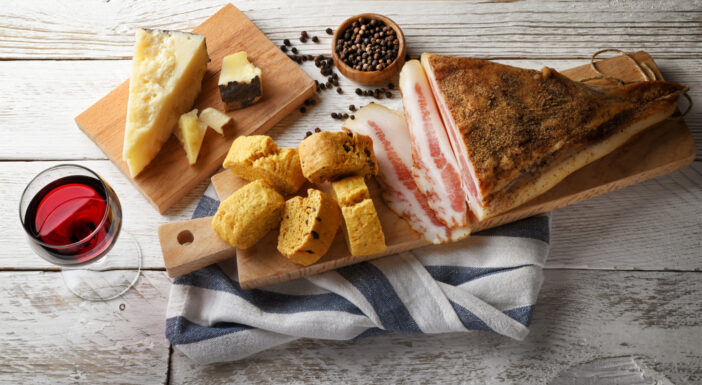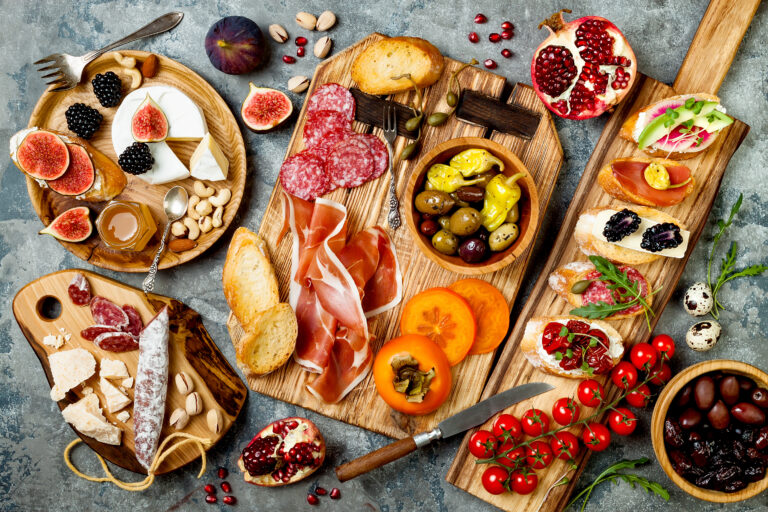7 Differences Between Guanciale vs Pancetta to Perfect Your Italian Dishes
The debate between pancetta and guanciale in Italian cuisine centers on their origin, fat content, and flavor profiles, impacting dishes like Carbonara and Bucatini.

Just like America boasts its iconic rivalries, Italy cherishes its culinary battles, with the guanciale vs pancetta debate standing as a testament to the country’s rich food heritage. This centuries-old contention not only divides kitchens but has also found its way into meme culture, highlighting its significance in Italian cuisine.
Disclosure: As an Amazon Associate, this site earns from qualifying purchases. Thank you!
Key Differences Between Pancetta and Guanciale

Diving into the heart of Italian cuisine, you’ll find the debate between pancetta and guanciale at its core. Both ingredients are pillars in the realm of Italian cooking, each bringing a unique flavor and texture to dishes. Let’s zoom in on the key differences that set them apart.
Part of the Pig: Belly vs. Jowl
Firstly, the primary difference lies in the part of the pig from which they are derived. Pancetta, sometimes called Italian bacon, originates from the belly of the pig. It’s salted and cured, rolled into a casing, and might be dried-cured for several months. On the other hand, guanciale is made from the pig’s jowl or cheek. This distinction in origin contributes to their unique textures and flavors.
Fat Content: Guanciale’s Richer Profile
When it comes to fat content, guanciale takes the lead with a higher fat-to-meat ratio, given its jowl origin. This richness in fat content is crucial, especially in dishes like Spaghetti Carbonara and Bucatini all’Amatriciana, where guanciale’s fat is rendered out, adding a depth and silkiness to the sauce that pancetta can’t quite achieve. The essence of guanciale lies in its ability to meld with other ingredients, creating a sumptuous base that’s hard to replicate.
Flavor Profiles: How Spices and Curing Affect Taste
Pancetta has a clean, straightforward salty, and peppery taste due to its non-smoked curing process, making it versatile for salads and pasta sauces. Guanciale, with traditional curing methods, offers a more complex and nuanced flavor, preferred by purists for traditional Italian recipes.
In sum, while pancetta and guanciale may seem interchangeable, their differences in origin, fat content, and flavor contribute significantly to their unique culinary roles. Whether you’re whipping up a classic Carbonara or a hearty Bolognese Ragu, choosing the right ingredient can elevate your dish from good to transcendent.
Culinary Uses in Italian Cuisine

Diving deeper into the heart of Italian kitchens, let’s explore how pancetta and guanciale shine in their respective roles. These ingredients, while both pivotal to the flavor profiles of numerous dishes, serve distinctly different purposes in Italian culinary tradition.
Pancetta: Versatile Kitchen Staple
Pancetta, the Italian counterpart to bacon, is cured with salt and spices, then rolled and air-dried. Its clean, peppery taste makes it ideal for a variety of dishes. It adds depth to Bolognese Ragu, offers a salty crunch in salads, enhances chicken or fish, and provides crisp lardons for pizzas and soups.
Guanciale: The Soul of Traditional Dishes
Guanciale, derived from the pig’s cheek, has a higher fat content, imparting a rich, silky texture and robust flavor. Essential in Spaghetti Carbonara and Bucatini all’Amatriciana, its fatty richness blends perfectly with Pecorino Romano cheese and spices, creating a unique balance that pancetta can’t match.
Pancetta offers versatility and a clean flavor for various dishes, while guanciale provides the depth and richness essential to traditional Italian recipes. Choosing between them can significantly impact the final taste of your dish.
How to Choose Between Pancetta and Guanciale

Navigating the choice between pancetta and guanciale can upgrade your Italian dishes from great to authentically sublime. Here’s how to make the right pick every time.
- Identify the Base Ingredient: Pancetta, not smoked and typically cured with salt and spices, offers a subtle, clean taste. It’s your go-to for dishes like Bolognese Ragu where the meat supports rather than stars. Guanciale, with its rich fat content from the pig’s cheek, becomes the flavor powerhouse in recipes like Spaghetti Carbonara and Bucatini all’Amatriciana.
- Assess the Fat Content Needed: The higher fat ratio in guanciale translates to a deeper, richer base for sauces and pasta dishes. In recipes where fat is a flavor carrier, guanciale outranks pancetta. However, for a lighter, more peppery touch, pancetta beautifully complements without overwhelming.
- Consider the Texture Desired: Pancetta, being firmer, works well in salads or dishes where a crispier texture is desired. If your dish benefits from meltingly tender chunks of fat that enrich every bite, guanciale’s your choice.
- For Subtle Enhancements, Choose Pancetta: When your dish calls for a hint of pork without overpowering other ingredients—think vegetable soups, salads, or pasta dishes like Carbonara where you’re out of guanciale—pancetta discreetly adds depth.
- For Bold Taste Profiles, Opt for Guanciale: Its intense flavor is unmatched in traditional recipes requiring a robust pork taste. Guanciale excels in dishes where its fatty richness can melt into the sauce, lending an incomparable savoriness.
- Matching with Other Ingredients: Consider the other flavors in your dish. Lighter, more delicate ingredients pair well with Pancetta’s gentle touch. Hearty, robust flavors—like those in Tomato-based sauces or rich pecorino cheese—welcome Guanciale’s boldness.
- Experimentation Is Key: Don’t be afraid to experiment by swapping pancetta for guanciale or vice versa. The subtle differences can lead to delightful discoveries in your culinary journey. Each has its place in Italian cuisine, and your palette will guide your choice.
Choosing between pancetta and guanciale isn’t just a matter of availability but a conscious decision to align with your dish’s authenticity and flavor profile. Let your recipe’s requirements and your taste preferences guide you toward the perfect Italian culinary experience.
Substituting Pancetta and Guanciale in Recipes
When diving into the Italian cooking scene, it’s essential to know how you can switch up pancetta and guanciale without losing the essence of your dish. Whether it’s a scarcity of ingredients or just curiosity pushing you to experiment, there are ways to substitute these two without compromising on authenticity.
Tips for Substitution: Keeping Authenticity
- Match Fat Content: Use slab pancetta when substituting for guanciale to maintain a rich, silky texture.
- Consider Spice Levels: Add extra pepper or spice when substituting pancetta for guanciale to mimic its bold flavor.
- Adjust Cooking Times: Guanciale cooks faster due to higher fat content. If using pancetta, tweak cooking times slightly to render fat properly.
- Taste as You Go: Adjust seasoning to ensure a balanced final product.
Recipe Adjustments
- Pasta Carbonara: Traditionally made with guanciale, you can use thick-cut pancetta to achieve a similar depth of flavor. Remember to render the fat slowly to coax out the rich taste.
- Bolognese Ragu: While pancetta is typically used, guanciale can provide an interesting twist. Its higher fat content introduces a more pronounced pork flavor, elevating the dish.
- Pasta alla Gricia: This simple yet flavorful dish calls for guanciale, but pancetta can be a great substitute. Just ensure it’s diced thick and rendered well to mimic guanciale’s texture and taste.
- Amatriciana Sauce: Known for its spicy and savory profile, swapping guanciale with pancetta requires you to amp up the spice quotient a bit. Add extra chili flakes to retain the original zest.
Mastering the balance between pancetta and guanciale is akin to striking culinary gold. By implementing these tips and understanding their unique qualities, you’re well on your way to creating Italian masterpieces in your kitchen, regardless of which ingredient you have on hand.






